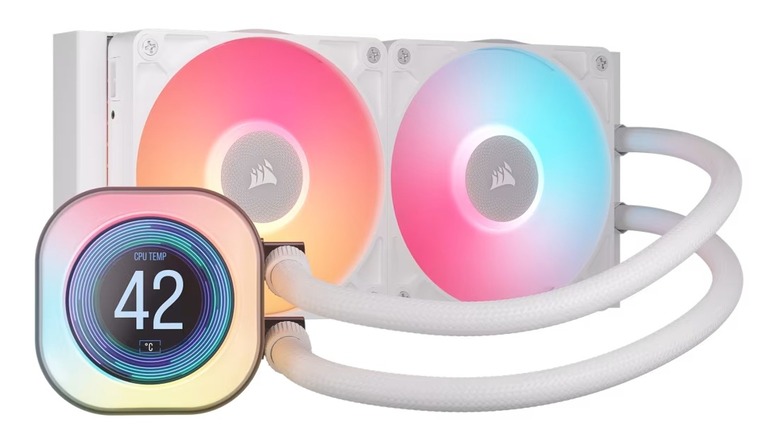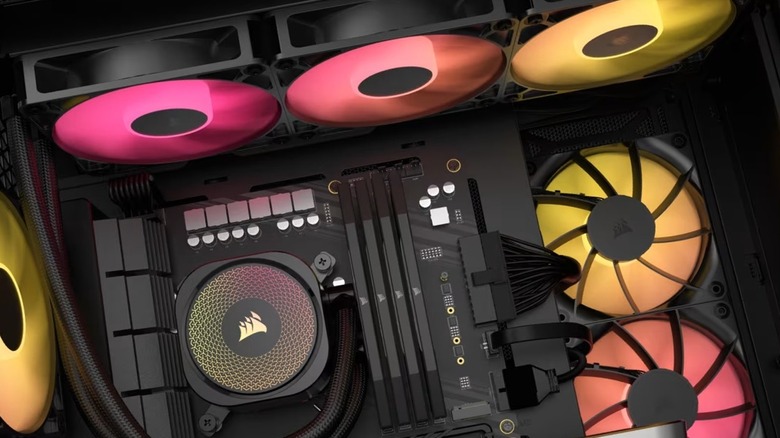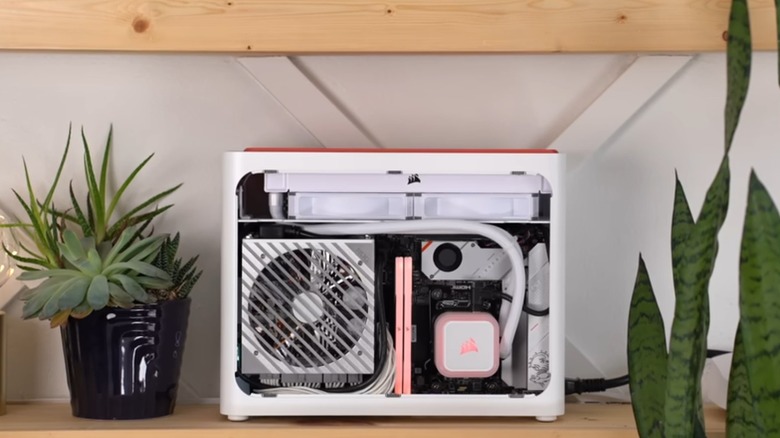Do PC Liquid Coolers Need Maintenance?
We may receive a commission on purchases made from links.
Keeping your computer cool is essential for optimal performance. When a PC starts to overheat, the processor frequency will drop (thermal throttling), and the cooling system kicks into high gear. This isn't ideal as a hot system won't perform as well, leading to a potentially noticeable slowdown. One method of maintaining temperatures within a PC is installing a liquid cooler, which typically comes in two main forms: an AIO (all-in-one) and a custom loop.
A custom loop is far more complex and requires that you periodically drain the liquid, pull out and clean the components, and replace the liquid tubes or any other aging parts of the system before adding fresh coolant. If that sounds too involved, there is fortunately another option, which is much more straightforward: an AIO. These cooling systems come sealed with the liquid already inside, and aren't designed to be taken apart, essentially consisting of a water block attached to a radiator via two tubes.
While you don't need to drain or take apart an AIO, there is still some basic maintenance required in the form of removing dust from the radiator fans and keeping the interior of your PC case clean. If you're considering adding a new thermal management system to your setup, here's how to choose the right liquid cooling kit for your PC.
How long does an AIO system last and what are its advantages
While AIO kits greatly simplify the addition of liquid cooling into a system, because everything is sealed, you can't typically replace individual components, but instead must get an entirely new kit if it starts to fail. Some manufacturers warranty their units for only two years, while others cover products as long as six years. When shopping for an AIO, it's important to note how long each product is under warranty. Typically, if well cared for, an AIO cooler has a lifespan of between five and seven years. Of course, this depends on a variety of factors unique to your PC and usage. Remember, though, that among the pieces of PC tech you should always avoid buying used, an AIO is certainly one of them.
The most significant advantage of AIO over a custom loop is the reduced risk of leaks, which could be devastating to the expensive components inside the case. Another benefit to using an AIO versus an air cooler is that in some circumstances, you can install the radiator under the roof of the case, venting heat directly outside and away from other components. In addition, when compared to certain air coolers, which can be bulky, an AIO can take up less space within the case, meaning easier access to areas like your motherboard's RAM slots. Lastly, some very flashy AIO designs can elevate the look of your PC with eye-catching lighting effects and built-in LED displays.
Do you really need an AIO cooler in your system?
Whether or not an AIO cooler is right for you depends on your PC setup, how demanding the software is that you plan to run, and personal taste. For example, an AIO cooler might be a great option if you're building a very compact PC, where space is highly limited. For those who plan to run resource-intensive games or editing software and find the whirring sound of air-cooling systems annoying, an AIO can provide a quieter experience under load. This is especially true if you utilize a bigger radiator where the enhanced surface area can dispel heat even more efficiently. Also, if the interior look of your PC is important, AIO coolers often provide a more stylish and less cluttered appearance.
However, because liquid cooling systems are more expensive, it doesn't always make sense to include them in every PC build. For example, if the tasks you perform on your computer consist of things like web browsing, working with documents, and maybe some casual gaming, an AIO isn't necessary, and a less expensive air cooler would be adequate. In fact, there are a variety of easy ways to cool your gaming PC for optimal performance outside of liquid cooling. If you're on a tight budget, you might consider an air cooler like the ID-COOLING SE-214-XT ARGB CPU Cooler, which performed well in benchmarks run by Gamers Nexus and is under $20.


